- Home
- Food Packaging
- Foodservice Packaging Market Size, Future Growth and Forecast 2033
Foodservice Packaging Market Size, Future Growth and Forecast 2033
Foodservice Packaging Market Segments - by Material (Plastic, Paper & Paperboard, Metal, Glass), Product Type (Flexible, Rigid), Application (Beverages, Prepared Meals, Fresh Produce, Dairy Products, Bakery & Confectionery), End-User (Restaurants, Catering Services, Institutional Food Services, Retail & Grocery Stores), and Region (Asia Pacific, North America, Latin America, Europe, and Middle East & Africa) - Market Dynamics, Growth Opportunities, Strategic Drivers, and PESTLE Outlook (2025–2033)
Foodservice Packaging Market Outlook
The foodservice packaging market was valued at $120 billion in 2024 and is projected to reach $180 billion by 2033, growing at a CAGR of 4.5% during the forecast period 2025–2033. This market is driven by the increasing demand for convenient and sustainable packaging solutions in the foodservice industry. The rise in online food delivery services and the growing trend of takeout meals have significantly contributed to the market's expansion. Additionally, the shift towards eco-friendly packaging materials, such as biodegradable plastics and recyclable paper, is further propelling market growth. The foodservice packaging market is also benefiting from technological advancements in packaging materials and designs, which enhance product shelf life and consumer appeal.

Report Scope
| Attributes | Details |
| Report Title | Foodservice Packaging Market Size, Future Growth and Forecast 2033 |
| Base Year | 2024 |
| Historic Data | 2017-2023 |
| Forecast Period | 2025-2033 |
| Number of Pages | 202 |
| Material | Plastic, Paper & Paperboard, Metal, Glass |
| Product Type | Flexible, Rigid |
| Application | Beverages, Prepared Meals, Fresh Produce, Dairy Products, Bakery & Confectionery |
| End-User | Restaurants, Catering Services, Institutional Food Services, Retail & Grocery Stores |
| Customization Available | Yes* |
Opportunities & Threats
One of the significant opportunities in the foodservice packaging market is the increasing consumer preference for sustainable and eco-friendly packaging solutions. As environmental concerns rise, consumers are becoming more conscious of the impact of packaging waste on the environment. This shift in consumer behavior is driving demand for biodegradable and recyclable packaging materials, presenting a lucrative opportunity for manufacturers to innovate and develop sustainable packaging solutions. Additionally, the growing trend of online food delivery services is creating a substantial demand for convenient and efficient packaging solutions that ensure food safety and quality during transit. Companies that can offer innovative packaging designs that enhance the consumer experience while minimizing environmental impact are likely to gain a competitive edge in the market.
Another opportunity lies in the technological advancements in packaging materials and designs. Innovations such as smart packaging, which includes features like temperature indicators and freshness sensors, are gaining traction in the foodservice industry. These advanced packaging solutions not only enhance product safety and quality but also provide valuable information to consumers, thereby improving customer satisfaction. Furthermore, the integration of digital technologies, such as QR codes and augmented reality, into packaging designs offers new avenues for engaging consumers and providing them with interactive experiences. Companies that can leverage these technological advancements to create innovative and functional packaging solutions are well-positioned to capitalize on the growing demand for smart packaging in the foodservice industry.
However, the foodservice packaging market faces certain challenges that could hinder its growth. One of the primary restrainers is the stringent regulatory environment surrounding packaging materials and waste management. Governments worldwide are implementing strict regulations to reduce packaging waste and promote sustainable practices, which can increase compliance costs for manufacturers. Additionally, the fluctuating prices of raw materials, such as plastics and paper, can impact the profitability of packaging companies. The market also faces challenges related to the recyclability and disposal of packaging materials, as consumers and regulatory bodies demand more sustainable solutions. Companies need to navigate these regulatory challenges and invest in research and development to create innovative and compliant packaging solutions that meet both consumer and regulatory expectations.
Market Share Analysis
The competitive landscape of the foodservice packaging market is characterized by the presence of several key players who dominate the market with their extensive product portfolios and strong distribution networks. These companies are continuously investing in research and development to innovate and offer sustainable packaging solutions that meet the evolving demands of consumers and regulatory bodies. The market is highly competitive, with companies focusing on strategic partnerships, mergers, and acquisitions to expand their market presence and enhance their product offerings. The increasing demand for eco-friendly packaging solutions has prompted companies to invest in sustainable materials and technologies, further intensifying the competition in the market.

Some of the major companies operating in the foodservice packaging market include Amcor Plc, Berry Global Inc., Sealed Air Corporation, Huhtamaki Oyj, and WestRock Company. Amcor Plc is a leading player in the market, known for its innovative packaging solutions and commitment to sustainability. The company offers a wide range of packaging products, including flexible and rigid packaging solutions, catering to various end-user industries. Berry Global Inc. is another prominent player, offering a diverse portfolio of packaging solutions with a focus on sustainability and innovation. The company has a strong global presence and is continuously expanding its product offerings to meet the growing demand for eco-friendly packaging solutions.
Sealed Air Corporation is renowned for its advanced packaging technologies and solutions that enhance product safety and quality. The company is committed to sustainability and has been actively investing in research and development to create innovative packaging solutions that reduce environmental impact. Huhtamaki Oyj is a key player in the foodservice packaging market, offering a wide range of sustainable packaging solutions for the foodservice industry. The company is focused on expanding its product portfolio and strengthening its market position through strategic acquisitions and partnerships. WestRock Company is another major player, known for its comprehensive packaging solutions and commitment to sustainability. The company offers a diverse range of packaging products, including paperboard and corrugated packaging solutions, catering to various end-user industries.
Other notable companies in the market include Dart Container Corporation, Genpak LLC, Pactiv LLC, and Graphic Packaging International, LLC. These companies are actively investing in research and development to create innovative and sustainable packaging solutions that meet the evolving demands of consumers and regulatory bodies. The competitive landscape of the foodservice packaging market is expected to remain dynamic, with companies focusing on innovation, sustainability, and strategic partnerships to gain a competitive edge and expand their market presence.
Key Highlights
- The foodservice packaging market is projected to grow at a CAGR of 4.5% from 2025 to 2033, driven by the increasing demand for sustainable and convenient packaging solutions.
- Technological advancements in packaging materials and designs, such as smart packaging, are gaining traction in the foodservice industry.
- The rise in online food delivery services is creating a substantial demand for efficient and safe packaging solutions.
- Stringent regulatory requirements and fluctuating raw material prices pose challenges to market growth.
- Key players in the market are focusing on innovation, sustainability, and strategic partnerships to expand their market presence.
- The shift towards eco-friendly packaging materials, such as biodegradable plastics and recyclable paper, is driving market growth.
- Companies are leveraging digital technologies, such as QR codes and augmented reality, to enhance consumer engagement and experience.
- The competitive landscape is characterized by the presence of several key players with extensive product portfolios and strong distribution networks.
- Strategic mergers, acquisitions, and partnerships are common strategies adopted by companies to strengthen their market position.
Top Countries Insights
In the foodservice packaging market, the United States holds a significant share, with a market size of $35 billion and a CAGR of 5%. The country's growth is driven by the increasing demand for convenient and sustainable packaging solutions, coupled with the rise in online food delivery services. The presence of major packaging companies and technological advancements in packaging materials further contribute to the market's expansion. However, the market faces challenges related to stringent regulatory requirements and the need for sustainable packaging solutions.

China is another key market, with a market size of $25 billion and a CAGR of 6%. The country's growth is fueled by the rapid expansion of the foodservice industry and the increasing demand for convenient and efficient packaging solutions. The government's focus on promoting sustainable practices and reducing packaging waste is also driving the demand for eco-friendly packaging materials. However, the market faces challenges related to the recyclability and disposal of packaging materials.
Germany holds a significant share in the European foodservice packaging market, with a market size of $15 billion and a CAGR of 4%. The country's growth is driven by the increasing demand for sustainable packaging solutions and the presence of major packaging companies. The government's stringent regulations on packaging waste and the focus on promoting sustainable practices are also contributing to the market's expansion. However, the market faces challenges related to the high cost of sustainable packaging materials.
India is an emerging market, with a market size of $10 billion and a CAGR of 7%. The country's growth is driven by the rapid expansion of the foodservice industry and the increasing demand for convenient and efficient packaging solutions. The government's focus on promoting sustainable practices and reducing packaging waste is also driving the demand for eco-friendly packaging materials. However, the market faces challenges related to the recyclability and disposal of packaging materials.
Brazil is another key market, with a market size of $8 billion and a CAGR of 5%. The country's growth is driven by the increasing demand for convenient and sustainable packaging solutions, coupled with the rise in online food delivery services. The presence of major packaging companies and technological advancements in packaging materials further contribute to the market's expansion. However, the market faces challenges related to stringent regulatory requirements and the need for sustainable packaging solutions.
Evolving Market Dynamics (2018–2024) and Strategic Foresight (2025–2033)
| Metrics | 2018–2024 | 2025–2033 |
|---|---|---|
| CAGR | 3.5% | 4.5% |
| Market Size Evolution | $100 billion to $120 billion | $120 billion to $180 billion |
| Segment Distribution Shifts | Plastic Dominance | Eco-Friendly Materials Rise |
| Regional Contribution Changes | North America & Europe Lead | Asia Pacific Growth Surge |
| Technological Impact Factors | Basic Packaging | Smart & Interactive Packaging |
| Client Demand Transformations | Convenience Focus | Sustainability & Innovation |
Foodservice Packaging Market Segments Insights

Material Analysis
The material segment of the foodservice packaging market is primarily dominated by plastic, paper & paperboard, metal, and glass. Plastic remains a popular choice due to its versatility, durability, and cost-effectiveness. However, the increasing environmental concerns and regulatory pressures are driving the shift towards more sustainable materials such as biodegradable plastics and recyclable paper. Paper & paperboard are gaining traction as they offer a more eco-friendly alternative, with many companies investing in innovative paper-based packaging solutions. Metal and glass, although less commonly used, are preferred for specific applications that require higher durability and product protection. The demand for sustainable materials is expected to grow significantly, with companies focusing on developing innovative solutions that meet both consumer and regulatory expectations.
The competition in the material segment is intense, with companies investing heavily in research and development to create innovative and sustainable packaging solutions. The shift towards eco-friendly materials is driving companies to explore new technologies and materials that reduce environmental impact while maintaining product quality and safety. The demand for biodegradable and recyclable materials is expected to increase, with companies focusing on developing solutions that meet the evolving demands of consumers and regulatory bodies. The material segment is expected to witness significant growth, driven by the increasing demand for sustainable packaging solutions and the shift towards eco-friendly materials.
Product Type Analysis
The product type segment of the foodservice packaging market is divided into flexible and rigid packaging solutions. Flexible packaging, which includes pouches, bags, and wraps, is gaining popularity due to its lightweight, cost-effectiveness, and convenience. The demand for flexible packaging is driven by the increasing preference for convenient and portable packaging solutions that enhance consumer experience. Rigid packaging, which includes containers, trays, and boxes, is preferred for applications that require higher durability and product protection. The demand for rigid packaging is driven by the need for secure and tamper-proof packaging solutions that ensure product safety and quality.
The competition in the product type segment is fierce, with companies focusing on innovation and sustainability to gain a competitive edge. The demand for flexible packaging is expected to grow significantly, driven by the increasing preference for convenient and portable packaging solutions. Companies are investing in research and development to create innovative and sustainable packaging solutions that meet the evolving demands of consumers and regulatory bodies. The product type segment is expected to witness significant growth, driven by the increasing demand for convenient and sustainable packaging solutions.
Application Analysis
The application segment of the foodservice packaging market includes beverages, prepared meals, fresh produce, dairy products, and bakery & confectionery. The demand for packaging solutions in the beverage segment is driven by the increasing consumption of ready-to-drink beverages and the need for convenient and portable packaging solutions. The prepared meals segment is witnessing significant growth, driven by the increasing demand for convenient and ready-to-eat meals. The demand for packaging solutions in the fresh produce segment is driven by the need for packaging solutions that enhance product shelf life and reduce food waste.
The competition in the application segment is intense, with companies focusing on innovation and sustainability to gain a competitive edge. The demand for packaging solutions in the beverage segment is expected to grow significantly, driven by the increasing consumption of ready-to-drink beverages. Companies are investing in research and development to create innovative and sustainable packaging solutions that meet the evolving demands of consumers and regulatory bodies. The application segment is expected to witness significant growth, driven by the increasing demand for convenient and sustainable packaging solutions.
End-User Analysis
The end-user segment of the foodservice packaging market includes restaurants, catering services, institutional food services, and retail & grocery stores. The demand for packaging solutions in the restaurant segment is driven by the increasing trend of takeout meals and the need for convenient and efficient packaging solutions. The catering services segment is witnessing significant growth, driven by the increasing demand for convenient and efficient packaging solutions that ensure food safety and quality during transit. The demand for packaging solutions in the institutional food services segment is driven by the need for secure and tamper-proof packaging solutions that ensure product safety and quality.
The competition in the end-user segment is fierce, with companies focusing on innovation and sustainability to gain a competitive edge. The demand for packaging solutions in the restaurant segment is expected to grow significantly, driven by the increasing trend of takeout meals. Companies are investing in research and development to create innovative and sustainable packaging solutions that meet the evolving demands of consumers and regulatory bodies. The end-user segment is expected to witness significant growth, driven by the increasing demand for convenient and sustainable packaging solutions.
Foodservice Packaging Market Segments
The Foodservice Packaging market has been segmented on the basis of
Material
- Plastic
- Paper & Paperboard
- Metal
- Glass
Product Type
- Flexible
- Rigid
Application
- Beverages
- Prepared Meals
- Fresh Produce
- Dairy Products
- Bakery & Confectionery
End-User
- Restaurants
- Catering Services
- Institutional Food Services
- Retail & Grocery Stores
Primary Interview Insights
What are the key drivers of growth in the foodservice packaging market?
What challenges does the foodservice packaging market face?
How are companies addressing the demand for sustainable packaging solutions?
What role do technological advancements play in the foodservice packaging market?
How is the competitive landscape of the foodservice packaging market evolving?
Latest Reports
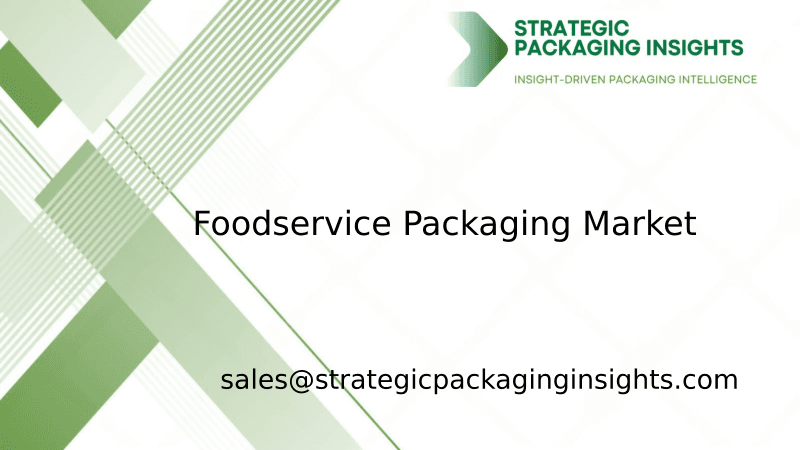
The foodservice packaging market was valued at $120 billion in 2024 and is projected to reach $180 billion by 2033, growing at a CAGR of 4.5% during the forecast period 2025–2033.

The nano-enabled packaging market was valued at $15.2 billion in 2024 and is projected to reach $35.6 billion by 2033, growing at a CAGR of 9.5% during the forecast period 2025–2033.

The Cold Seal Packaging market was valued at $1.5 billion in 2024 and is projected to reach $2.3 billion by 2033, growing at a CAGR of 4.8% during the forecast period 2025–2033.

The Transparent Barrier Packaging Films market was valued at $12.5 billion in 2024 and is projected to reach $20.3 billion by 2033, growing at a CAGR of 5.8% during the forecast period 2025–2033.

The Flatback Tape market was valued at $2.5 billion in 2024 and is projected to reach $4.1 billion by 2033, growing at a CAGR of 5.8% during the forecast period 2025–2033.

The packer bottle market was valued at $3.5 billion in 2024 and is projected to reach $5.8 billion by 2033, growing at a CAGR of 5.2% during the forecast period 2025–2033.
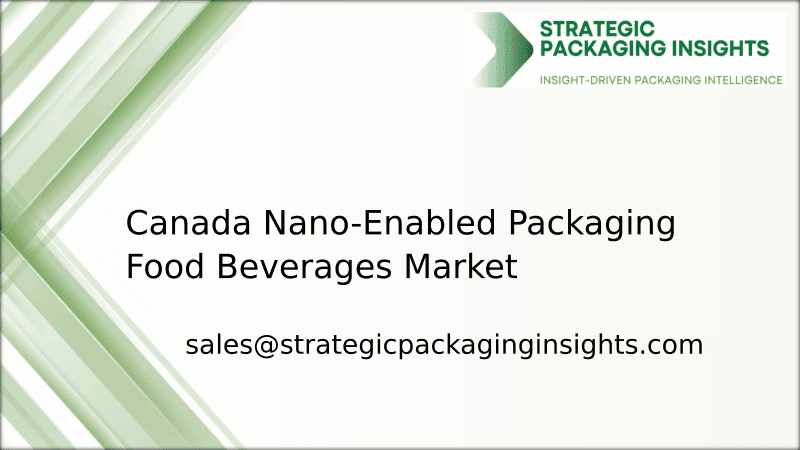
The Canada Nano-Enabled Packaging Food Beverages market was valued at $1.2 billion in 2024 and is projected to reach $3.5 billion by 2033, growing at a CAGR of 12.5% during the forecast period 2025–2033.
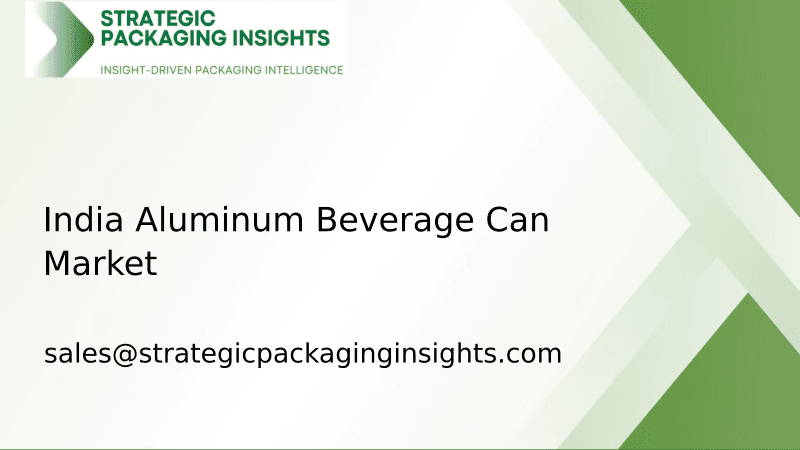
The India Aluminum Beverage Can market was valued at $1.2 billion in 2024 and is projected to reach $2.5 billion by 2033, growing at a CAGR of 8.5% during the forecast period 2025–2033.
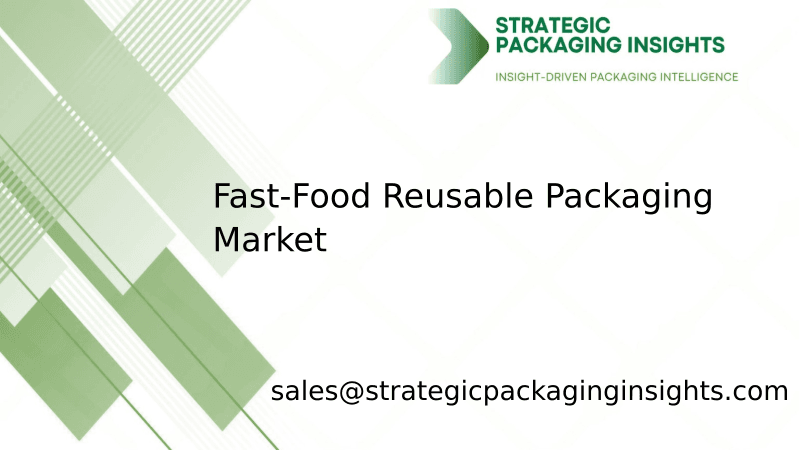
The fast-food reusable packaging market was valued at $1.2 billion in 2024 and is projected to reach $3.5 billion by 2033, growing at a CAGR of 12.5% during the forecast period 2025–2033.

The pallets market was valued at $59.91 billion in 2024 and is projected to reach $88.69 billion by 2033, growing at a CAGR of 4.5% during the forecast period 2025–2033.

The lamination adhesives market was valued at $2.5 billion in 2024 and is projected to reach $4.1 billion by 2033, growing at a CAGR of 5.8% during the forecast period 2025–2033.

The garment packing machine market was valued at $1.2 billion in 2024 and is projected to reach $2.5 billion by 2033, growing at a CAGR of 8.5% during the forecast period 2025–2033.

The shrink bags market was valued at $3.5 billion in 2024 and is projected to reach $5.8 billion by 2033, growing at a CAGR of 5.2% during the forecast period 2025–2033.

The beverage packaging market was valued at $128 billion in 2024 and is projected to reach $186 billion by 2033, growing at a CAGR of 4.2% during the forecast period 2025–2033.

The North America Freight and Logistics market was valued at $1,200 billion in 2024 and is projected to reach $1,800 billion by 2033, growing at a CAGR of 4.5% during the forecast period 2025–2033.

The Anti-Counterfeiting Packaging market was valued at $105 billion in 2024 and is projected to reach $182 billion by 2033, growing at a CAGR of 6.5% during the forecast period 2025–2033.

The Active and Modified Atmospheric Packaging market was valued at $15.2 billion in 2024 and is projected to reach $25.8 billion by 2033, growing at a CAGR of 6.5% during the forecast period 2025–2033.

The molded fiber packaging market was valued at $7.5 billion in 2024 and is projected to reach $12.3 billion by 2033, growing at a CAGR of 5.8% during the forecast period 2025–2033.

The micro packaging market was valued at $1.2 billion in 2024 and is projected to reach $2.5 billion by 2033, growing at a CAGR of 8.5% during the forecast period 2025–2033.

The Anti-counterfeit Pharmaceuticals Packaging market was valued at $80 billion in 2024 and is projected to reach $150 billion by 2033, growing at a CAGR of 7.5% during the forecast period 2025–2033.

The MDO-PE Film market was valued at $3.5 billion in 2024 and is projected to reach $5.8 billion by 2033, growing at a CAGR of 5.2% during the forecast period 2025–2033.
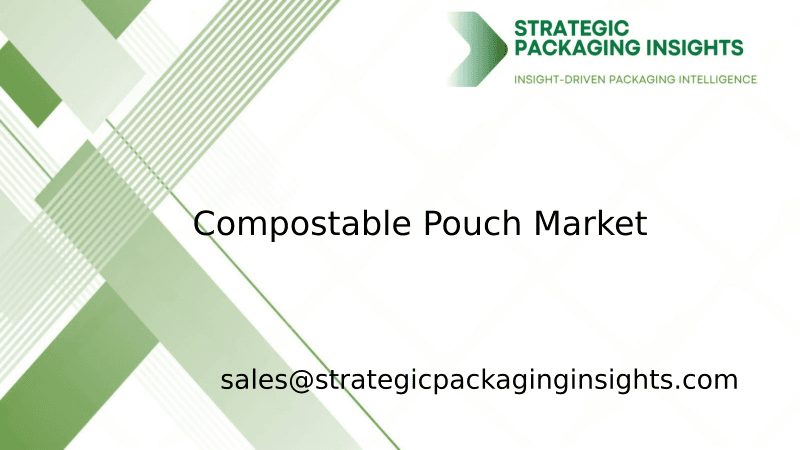
The compostable pouch market was valued at $1.2 billion in 2024 and is projected to reach $3.5 billion by 2033, growing at a CAGR of 12.5% during the forecast period 2025–2033.

The Smart Packaging market was valued at $23.5 billion in 2024 and is projected to reach $43.5 billion by 2033, growing at a CAGR of 7.2% during the forecast period 2025–2033.

The pharmaceutical glass packaging market was valued at $14.5 billion in 2024 and is projected to reach $22.3 billion by 2033, growing at a CAGR of 4.9% during the forecast period 2025–2033.

The tray liners market was valued at $1.2 billion in 2024 and is projected to reach $2.3 billion by 2033, growing at a CAGR of 6.5% during the forecast period 2025–2033.

The foodservice packaging market was valued at $120 billion in 2024 and is projected to reach $180 billion by 2033, growing at a CAGR of 4.5% during the forecast period 2025–2033.

The nano-enabled packaging market was valued at $15.2 billion in 2024 and is projected to reach $35.6 billion by 2033, growing at a CAGR of 9.5% during the forecast period 2025–2033.

The Cold Seal Packaging market was valued at $1.5 billion in 2024 and is projected to reach $2.3 billion by 2033, growing at a CAGR of 4.8% during the forecast period 2025–2033.

The Transparent Barrier Packaging Films market was valued at $12.5 billion in 2024 and is projected to reach $20.3 billion by 2033, growing at a CAGR of 5.8% during the forecast period 2025–2033.

The Flatback Tape market was valued at $2.5 billion in 2024 and is projected to reach $4.1 billion by 2033, growing at a CAGR of 5.8% during the forecast period 2025–2033.

The packer bottle market was valued at $3.5 billion in 2024 and is projected to reach $5.8 billion by 2033, growing at a CAGR of 5.2% during the forecast period 2025–2033.

The Canada Nano-Enabled Packaging Food Beverages market was valued at $1.2 billion in 2024 and is projected to reach $3.5 billion by 2033, growing at a CAGR of 12.5% during the forecast period 2025–2033.

The India Aluminum Beverage Can market was valued at $1.2 billion in 2024 and is projected to reach $2.5 billion by 2033, growing at a CAGR of 8.5% during the forecast period 2025–2033.

The fast-food reusable packaging market was valued at $1.2 billion in 2024 and is projected to reach $3.5 billion by 2033, growing at a CAGR of 12.5% during the forecast period 2025–2033.

The pallets market was valued at $59.91 billion in 2024 and is projected to reach $88.69 billion by 2033, growing at a CAGR of 4.5% during the forecast period 2025–2033.

The lamination adhesives market was valued at $2.5 billion in 2024 and is projected to reach $4.1 billion by 2033, growing at a CAGR of 5.8% during the forecast period 2025–2033.

The garment packing machine market was valued at $1.2 billion in 2024 and is projected to reach $2.5 billion by 2033, growing at a CAGR of 8.5% during the forecast period 2025–2033.

The shrink bags market was valued at $3.5 billion in 2024 and is projected to reach $5.8 billion by 2033, growing at a CAGR of 5.2% during the forecast period 2025–2033.

The beverage packaging market was valued at $128 billion in 2024 and is projected to reach $186 billion by 2033, growing at a CAGR of 4.2% during the forecast period 2025–2033.

The North America Freight and Logistics market was valued at $1,200 billion in 2024 and is projected to reach $1,800 billion by 2033, growing at a CAGR of 4.5% during the forecast period 2025–2033.

The Anti-Counterfeiting Packaging market was valued at $105 billion in 2024 and is projected to reach $182 billion by 2033, growing at a CAGR of 6.5% during the forecast period 2025–2033.

The Active and Modified Atmospheric Packaging market was valued at $15.2 billion in 2024 and is projected to reach $25.8 billion by 2033, growing at a CAGR of 6.5% during the forecast period 2025–2033.

The molded fiber packaging market was valued at $7.5 billion in 2024 and is projected to reach $12.3 billion by 2033, growing at a CAGR of 5.8% during the forecast period 2025–2033.

The micro packaging market was valued at $1.2 billion in 2024 and is projected to reach $2.5 billion by 2033, growing at a CAGR of 8.5% during the forecast period 2025–2033.

The Anti-counterfeit Pharmaceuticals Packaging market was valued at $80 billion in 2024 and is projected to reach $150 billion by 2033, growing at a CAGR of 7.5% during the forecast period 2025–2033.

The MDO-PE Film market was valued at $3.5 billion in 2024 and is projected to reach $5.8 billion by 2033, growing at a CAGR of 5.2% during the forecast period 2025–2033.

The compostable pouch market was valued at $1.2 billion in 2024 and is projected to reach $3.5 billion by 2033, growing at a CAGR of 12.5% during the forecast period 2025–2033.

The Smart Packaging market was valued at $23.5 billion in 2024 and is projected to reach $43.5 billion by 2033, growing at a CAGR of 7.2% during the forecast period 2025–2033.

The pharmaceutical glass packaging market was valued at $14.5 billion in 2024 and is projected to reach $22.3 billion by 2033, growing at a CAGR of 4.9% during the forecast period 2025–2033.

The tray liners market was valued at $1.2 billion in 2024 and is projected to reach $2.3 billion by 2033, growing at a CAGR of 6.5% during the forecast period 2025–2033.